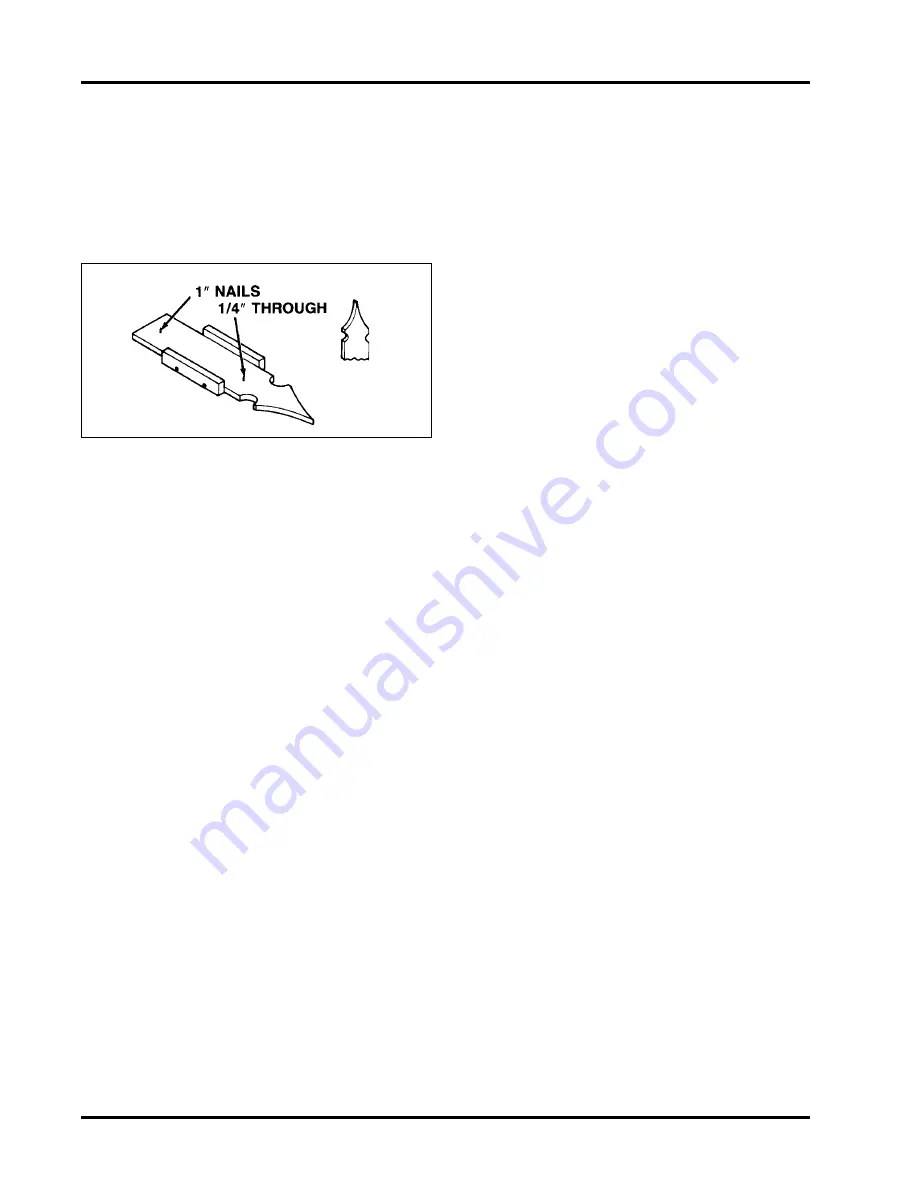
555970
MARK V – MOUNTED OVERARM PIN ROUTER
22
keep it from sliding around while you
make your cuts. To seat the stock in a
profile fixture, just position it properly
and tap it gently with the heel of your
hand or a non-metallic mallet to seat the
screw or nail tips.
AN OVERVIEW OF PIN ROUTING
WITH FIXTURES
The basic principle of all Pin Routing fixtures
is the same, no matter which style of fixture
you decide to use, with one difference:
• With screw-down and clamp-in style fix-
tures, a template is first cut and guided
against the Table Pin, while the router bit
transfers the design to the laminate side
of the fixture. This process creates the fix-
ture grooves that will guide the Router Bit
as it cuts your duplicates.
• With profile style fixtures, the cut-out
template IS the fixture.
The basic, four-step Pin-Routing
process, in a nutshell:
1. Make a template in the shape of your
desired finished piece.
2. Use the template to cut the grooves in
the laminate side of your fixture
3. Attach a workpiece blank to the oppo-
site side of the fixture
4. Trace the grooves you cut in step two
over the Table Pin, transferring your de-
sign to the workpiece
Now, let’s review the specific procedures for
making the various types of fixtures and us-
ing them to duplicate your projects.
HOW TO MAKE SCREW-DOWN
AND CLAMP-IN FIXTURES
The fixture-making process is really quite
simple. Here’s the step-by-step process:
1. Make a Template – Start by tracing a
full-size pattern for your project onto a
piece of 1/2" thick solid (without voids)
plywood or MDF.
Why 1/2" thick? Because the screw-in
Pins that you’ll be routing against (and
over) are 3/8" high and the template
must be thicker than the height of the
pin to allow for free movement.
Cut out your shape carefully with a
Bandsaw and/or Scroll Saw. Keep out-
side of your cutting lines at all times.
Always leave a small amount of mate-
rial that you can sand down to its exact
shape when you’ve finished with a
drum sander or your choice of sanding
device.
Alternative Method
As an alternative to making a template
from scratch, you can also use an exist-
ing item as your fixture-making tem-
plate. In our Figure 13 example, we’ve
screwed an existing awards plaque to
our fixture blank.
With the item attached to the particle-
board side of your fixture blank, trace
it against the table pin to form the
grooves in the laminate side of your fix-
ture (See Fig. 14).
Figure 12. A typical profile fixture and
the picket fence top made with it.
Содержание 555970
Страница 9: ...MARK V MOUNTED OVERARM PIN ROUTER 555970 9...






























